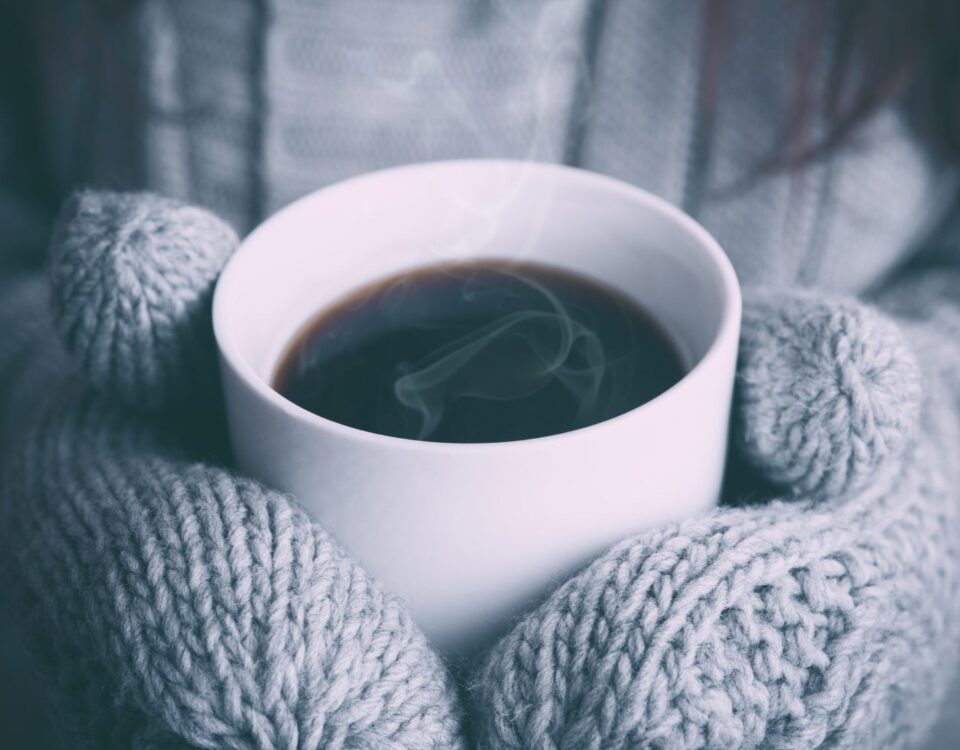
6 Reasons Your Child Should Get a Physical Before School Starts
December 18, 2024
7 Common Myths about Cold and Flu Season
December 18, 2024Summer’s here and people all over are outside to catch some rays. Sunshine gives us Vitamin D, so getting plenty of sun is good… Or is it? Let’s look at some pretty ugly results from too much sun and see how it could have been avoided.
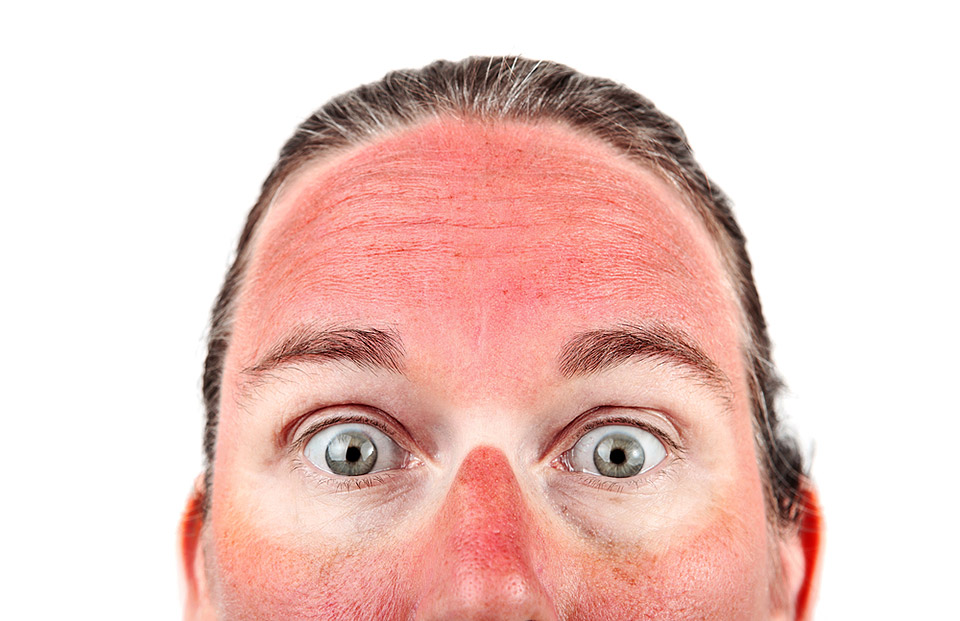
- We’ve all been there. Out having fun in the sun while wearing sunglasses. But if you’re out there too long, you’ll end up looking like a raccoon in negative! Clothing counts. Wear a hat with a wide brim in the sun to give your face more protection from damaging rays. And don’t forget the sunscreen!
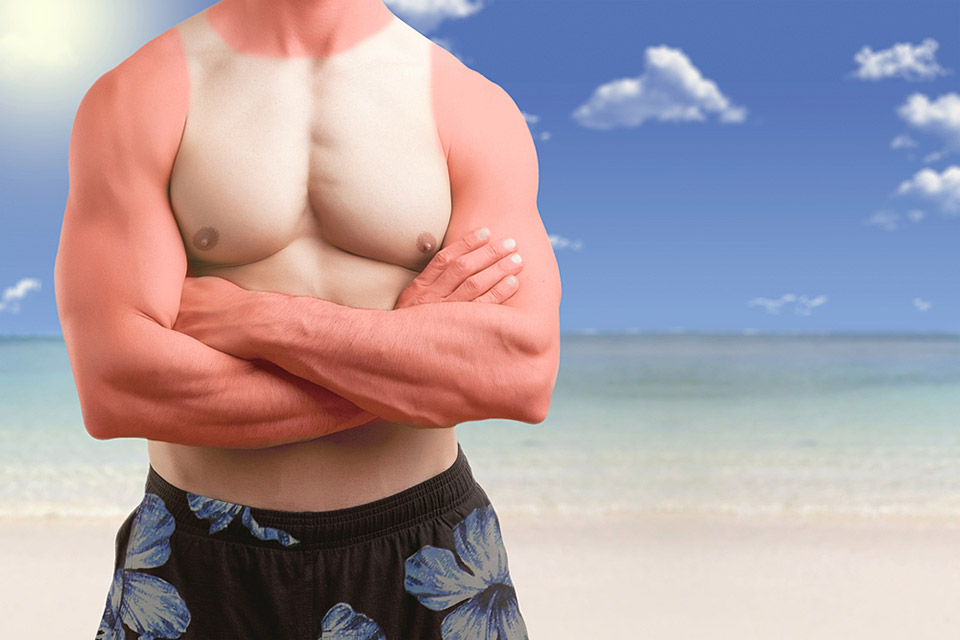
- Men do it, too. A fun game of volleyball on the beach sounds like a great way to spend time with your friends (and maybe make a few new ones, too). But a while a tank-top might give you some protection, all those exposed areas are left at the mercy of that burning ball in the sky. Don’t forget the sunscreen!
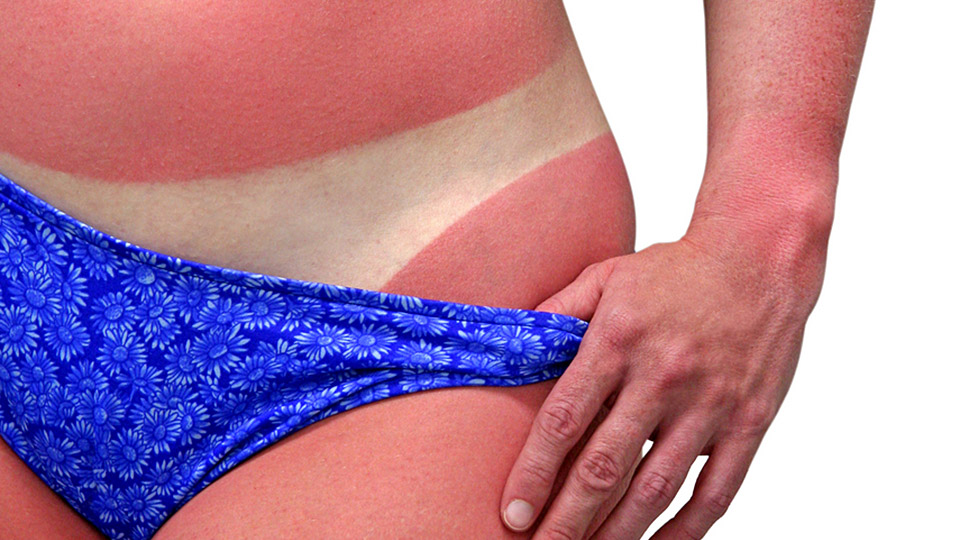
- The dreaded panty-burn. About the only place on this poor woman’s body that won’t be agonizing is the tiny area covered by her bikini. That bright red skin indicates that the sun has really taken its toll on her exposed skin. Don’t forget the sunscreen!
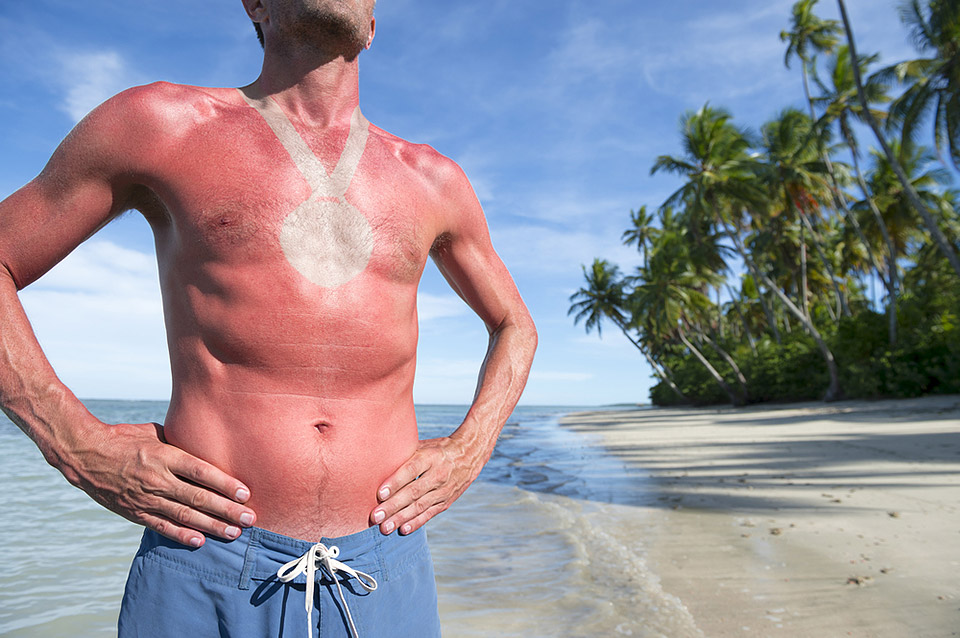
- The award-winning sunburn. Awards give us bragging rights, but this one is nothing to boast about. The extreme difference between the color of his unburned skin and his sunburned skin means his accomplishments are perhaps a little overstated. Don’t forget the sunscreen!
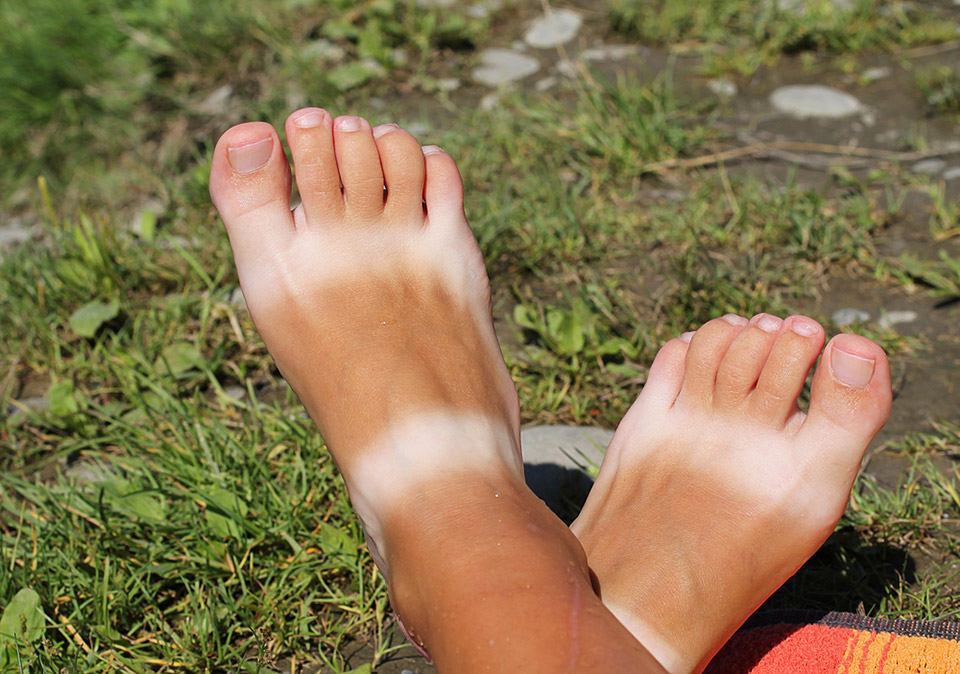
- The forgotten feet. In the summer heat, we take off as much clothing as we can to stay cool. That includes wearing sandals instead of sneakers. These feet are evidence that lower extremities also are affected by the sun. Don’t forget the sunscreen!
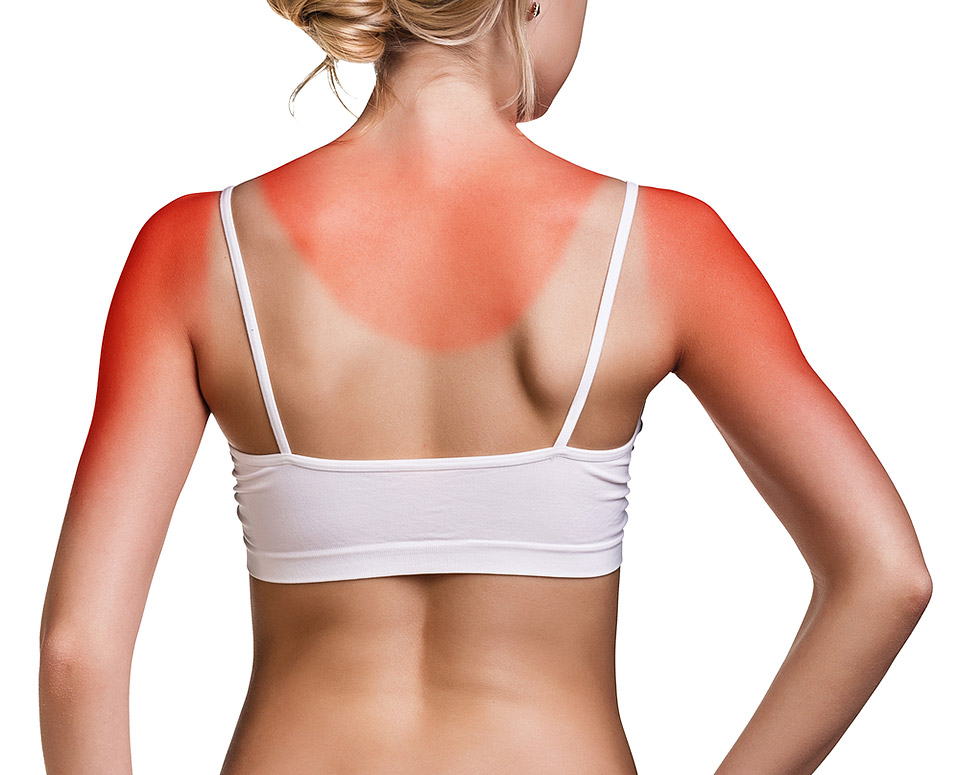
- This one is particularly worrisome, because if she tries to even it out so that her bathing suit looks good, she’s going to do real damage to the already-burned skin. Don’t forget the sunscreen!
What happens when your skin burns?
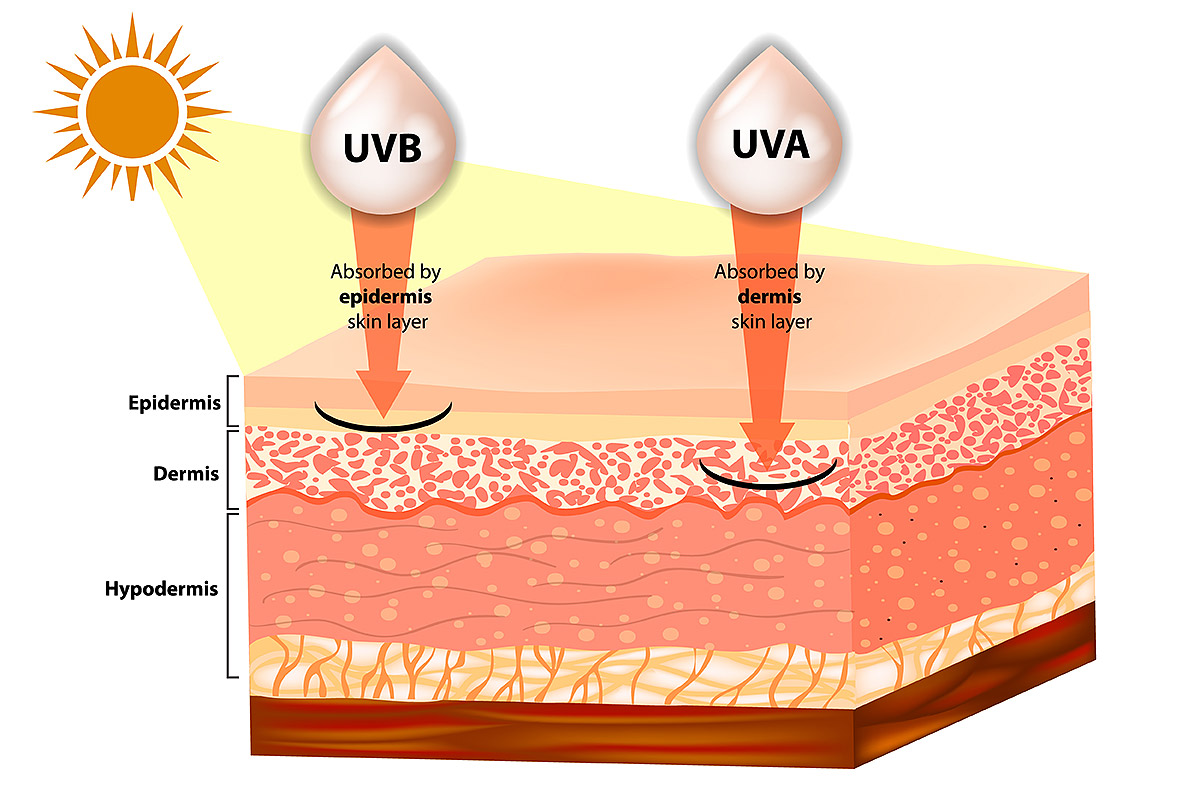
When your skin is exposed to the sun, it calls up its own defense mechanism. This is a pigment called melanin that is naturally produced by melanocyte cells in your skin. When your skin senses that it is absorbing too much sun, it releases the melanin, which absorbs ultraviolet light and dissipates it as heat.
Although everyone has about the same number of melanocytes, there is a wide variance in how much melanin is produced and what color it is. As melanin is a natural sunscreen, people with darker skin have more at their disposal. However, that doesn’t mean they can tolerate overexposure to sun. Ultimately, all people are vulnerable to the wrath of the sun’s ultraviolet rays.
Our bodies are created to fix the damage from normal wear and tear of living. But the damage occurring from overexposure to the sun’s UV rays can release a chain reaction that can end up being skin cancer. Even one blistering sunburn as a child can lead to greater risk of melanoma (skin cancer, the deadliest form of cancer) in later life. When cells have mutated DNA from sunburn, sometimes they proliferate as cancer.
How to avoid sunburn
Gary Chuang, an assistant professor of dermatology at Tufts University School of Medicine, has three basic (and logical) ways to avoid the damage done by the sun.
- Physical blockers in sunscreens. Look for the ingredients titanium dioxide or zinc oxide, because they reflect off UV radiation.
- Hats. “Wear hats,” he said. “People think hats are going out of fashion, but they are a very basic physical blocker of the sun.”
- Apply sunscreen liberally and often.
How to read a sunscreen label
- Broad spectrum sunscreen offers protection from both forms of UV rays: UVA and UVB. Both forms of ultraviolet rays can cause severe damage.
- Sun Protection Factor. This number tells you how much protection you receive from using sunscreen. If it takes about 20 minutes of exposure for your skin to turn red, an SPF of 30 means it would take 30 times as long with the sunscreen. However, sweating, swimming, or even just lying about in the sun can wear the sunscreen off. It’s important to reapply every 2 hours.
- The FDA prohibits the terms “water-proof” or “sweat-proof,” as no sunscreen is truly that. However, water resistant sunscreen will provide about 40 minutes of swimming or 80 minutes of sweating protection.
- Look for the Skin Cancer Foundation Seal of Recommendation to assure yourself that you are getting what you pay for. Photobiologists (experts in the study of UV radiation) have provided two different seals. The Daily Use Seal is intended to indicate the efficacy of sunscreens intended to protect from brief exposure, like walking to the car. The Active Seal applies to sunscreens intended to protect against prolonged exposure.
- Usually on the back of the bottle, the ingredients list tells the main ingredients used to protect your skin. Active sunscreen ingredients are either chemical or physical. Avobenzone and benzophenone are chemical ingredients that work by absorbing UV so that it does not penetrate as deeply. Physical ingredients such as titanium dioxide and zinc oxide remain on the surface of the skin and deflect UV rays.

